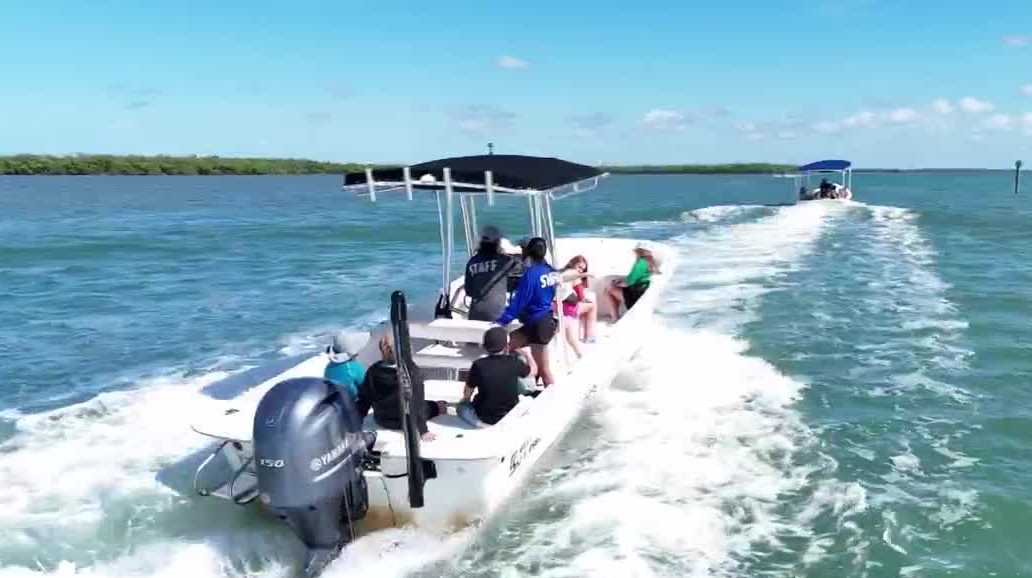Florida Gulf Coast University hosted a group of middle schoolers this week at Vester Field Station to help inspire the next generation about water quality.“I’ve been learning about how to clean the ocean, how to use different equipment and how to track down data,” said camper Dominic Diaz.Middle schoolers boated out to Lovers Key State Park, where they learned the importance of protecting our environment.“When we’re older, we could help save the ocean and use different equipment, and we’ll know how to use it in the future,” said Diaz.After dropping anchor, it was time to get sediment samples.“It’s going to teach us about how the beach has changed over time. It’s going to show us when hurricanes hit if there was erosion in that part of the area,” said camper Reid Benedict.On the other side of the beach, the search for shells kicked off.So, how does collecting shells and sediment help the next generation take the future of water quality into their hands?“When you’re in the classroom, they can be presented with all the information, but you don’t really fully grasp the enormity of it until you’re out here in the field and you see it firsthand,” said Nicholas Culligan, a post-doctoral researcher at FGCU Vester field station, who was leading the campers. The goal is to turn learning into inspiration.“Each of the past two days, we’ve had students say, I didn’t know I liked tides and currents, but maybe I want to do that when I grow up and be a coastal modeler,” said Culligan.DOWNLOAD the free Gulf Coast News app for your latest news and alerts on breaking news, weather, sports, entertainment, and more.
Florida Gulf Coast University hosted a group of middle schoolers this week at Vester Field Station to help inspire the next generation about water quality.
“I’ve been learning about how to clean the ocean, how to use different equipment and how to track down data,” said camper Dominic Diaz.
Middle schoolers boated out to Lovers Key State Park, where they learned the importance of protecting our environment.
“When we’re older, we could help save the ocean and use different equipment, and we’ll know how to use it in the future,” said Diaz.
After dropping anchor, it was time to get sediment samples.
“It’s going to teach us about how the beach has changed over time. It’s going to show us when hurricanes hit if there was erosion in that part of the area,” said camper Reid Benedict.
On the other side of the beach, the search for shells kicked off.
So, how does collecting shells and sediment help the next generation take the future of water quality into their hands?
“When you’re in the classroom, they can be presented with all the information, but you don’t really fully grasp the enormity of it until you’re out here in the field and you see it firsthand,” said Nicholas Culligan, a post-doctoral researcher at FGCU Vester field station, who was leading the campers.
The goal is to turn learning into inspiration.
“Each of the past two days, we’ve had students say, I didn’t know I liked tides and currents, but maybe I want to do that when I grow up and be a coastal modeler,” said Culligan.
DOWNLOAD the free Gulf Coast News app for your latest news and alerts on breaking news, weather, sports, entertainment, and more.
